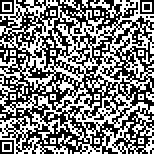|
|
|
| |
|
|
| 本文已被:浏览 913次 下载 332次 |

码上扫一扫! |
|
|
| 东沙群岛西部海区污损生物研究 |
|
严涛, 严文侠, 王华接, 严岩, 梁冠和, 董钰
|
|
中国科学院南海海洋研究所
|
|
| 摘要: |
| 海洋污损生物系指海洋环境中附着或栖息在船舶和各种人工设施上、对人类经济活动产生不利影响的动、植物和微生物,是影响海洋设施安全与使用寿命的重要因素之一。根据其形态结构上是否具备石灰质外壳或骨架,可分为硬性污损生物和软性污损生物两种,前者包括双壳类软体动物、无柄蔓足类和苔藓虫等生物,后者则为海藻和水螅等种类。海洋污损生物对大型海洋结构物的危害主要通过增大构件直径和表面粗糙度,增强对波浪和海流的阻力,从而造成结构物静力载荷和动力载荷增加。此外,导管架表面所附着的生物还会妨碍水下作业,甚至损坏潜水设备。
为适应我国海洋石油工业发展的需要,近十多年来科研人员对南海北部近海海区人工设施的污损生物状况进行了系统调查,并陆续发表了有关研究成果(严涛等,1997,1998,1999,2000)。然而,在珠江口东南、东沙群岛以西远离大陆和岛屿的深水海区,有关污损生物资料至今未见报道。本文根据实海调查结果,详细论述了该海区人工设施上的污损生物状况,以期丰富人类的海洋生态学知识,并为该海区海洋结构物的设计、保养和维修提供科学依据。 |
| 关键词: 东沙群岛 污损生物 |
| DOI: |
| 分类号: |
| 基金项目:中国科学院重大项目资助课题,87-18-04-02号。 |
|
| STUDIES OF THE MARINE FOULING IN OFFSHORE WATERS WEST OF DONGSHA ISLANDS |
|
Yan Tao, Yan Wenxia, Wang Huajie, Yan Yan, Liang Guanhe, Dong Yu
|
|
South China Sea Institute of Oceanology, the Chinese Academy of Sciences
|
| Abstract: |
| Marine fouling causes significant increase in the hydrodynamic loading of offshore structures, impedance of operational requirements and the alteration of corrosion characteristics, resulting in annual losses of millions of dollars. Thus understanding the phenomenon of marine fouling specific to a region is an essential prerequisite for designing and constructing both fixed &floating offshore structures and establishing appropriate cleaning programs.
To meet the need for the development of the offshore oil industry, an investigation on marine fouling in offshore areas west of Dongsha Islands, northern South China Sea, was conducted from April 1988 to October 1990. The Marex hydrological buoy system (Station ZM3) was deployed in 325 m depth water 60 n miles offshore, and Station A3 was located in 345 m depth water 63 n miles offshore. At Station A3, test panels on iron frames were hung on the mooring system at depths of -1m, -10 m, -25 m, -50 m, -100 m and -150 m, and exposed for 4, 8 & 12 months, respectively. Data on fouling species and biomass were obtained by examination of test panels, buoys and the mooring systems.
The results showed that in the above-mentioned waters, a total of 91 species were collected and identified from fouling communities. Of them, the dominant species were pedunculate barnacles, hydroids and algae. Oysters, pearl oysters and acorn barnacles were important fouling species, and their biomass proportions increased through time. Characteristic shifts of species composition with depth were observed also. For example, Lepas anatifera and L.anserifera mainly distributed from 0 m to -25 m. Conchoderma hunteri was found in the range of -10~-150 m, and the maximum values of the density and biomass occurred at -67. 5m.
As for acorn barnacles, a total of 9 species were collected. Hoowever, Balanus reticulatus, a common species in coastal waters of South China, was not found at both investigation stations. Moreover, sources of hard fouling organisms and influences of hydrological conditions on the species dispersal are discussed at the end of the paper. |
| Key words: Dongsha Islands marine fouling |
|
|
|
|
|
|


